Author: Mario Bizzini, PhD, MSc, PT
I arrived in Tokyo on Thursday January 4th after a 12 hour flight from Zürich. With two Japanese long-time friends, I walked around some familiar spots such as the Asakusa district and the Skytree tower, and of course we also visited a couple of fine sushi restaurants. In the evening of January 5th, after a 30 minutes speed train (shinkansen) ride from Toyko station, I traveled to Omiya for my first event of this trip.
Saturday 6th January 2024: Keynote at the the 10th Annual Conference of the Japanese Society of Sports Physical Therapy, Sonic city, Omiya, Saitama
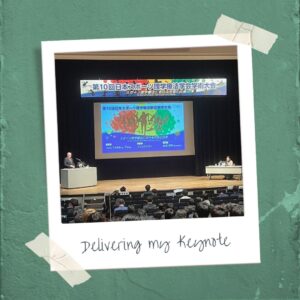
Prof. Akasaka (Saitama Medical University, chair of the conference) opened the 10th edition of the annual conference of the Japanese Society of Sports Physical Therapy (JSSPT) in front of more than 1100 attendees; a record for this conference. The two keynote lectures were given by myself (Injury prevention programs in sports) and Rafael Escamilla (USA; Biomechanics and prevention strategies of shoulder and elbow injuries in baseball pitching). The two days were filled with several parallel sessions on various topics,with a slight dominance of ACL and baseball-related presentations. Baseball is very popular in Japan, and the recent hype around superstar Shohei Ohtani (newly with LA Dodgers, after signing the biggest contract in Major League Baseball history) has only reinforced this passion.
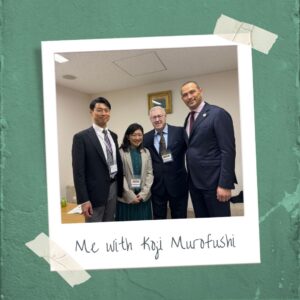
The Japanese Physical Therapy Association counts more than 110.000 members, while the JSSP includes about 1300 members (20% women). Physical therapists (PTs) and sports PTs in Japan still cannot open their own clinic, and often need another license, for example, as an athletic trainer or acupuncturist, in order to be able to work in sports. While historically acupuncture and judo therapy may be considered ‘traditional’ fields, athletic training and physical therapy are the two youngest professions. For sporting organizations and doctors, all these professionals are categorized as “trainers”, which can cause some confusion even among athletes and other professionals. Koji Murofushi, a former Olympic athlete (gold medal, Hammer throw, 2004) with a PhD in Sports Science, currently Head of the Japan Sports Agency, is a strong supporter of the important role of sports PT in athlete’s care. Invited by JSSPT, he held a lecture at the conference, highlighting the need for political support for Japanese sports PTs. A board member of JSSPT, Mina Samukawa, PhD, PT (assistant Professor, Hokkaido University) may play an important role as well in this direction. Newly elected in the International Federation of Sports Physical Therapy (IFSPT) executive board, her task is to coordinate the necessary steps towards the accreditation of the JSSPT educational pathway by IFSPT, thus allowing Japanese sports PTs to achieve international recognition, and opening the gate to the title of “Registered International Sports Physical Therapist”.
Wednesday 10th January 2024: Lecturing at Hokkaido University, Faculty of Health Sciences, Sapporo
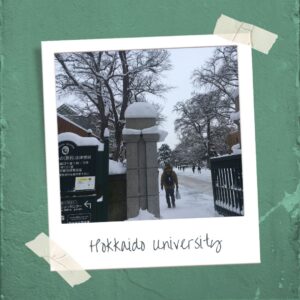
The Hokkaido University (founded 1876) in Sapporo is the oldest university in Japan. It was the fifth Imperial University in Japan, which were established to be the nation’s finest institutions of higher education or research. The main campus is located in downtown Sapporo, just north of Sapporo Station, and stretches approximately 2.4 kilometers making it the largest university campus in the country!
My colleague Mina has worked at the university for 20 years, currently as an Assistant Professor (but will become a full Professor in April: congratulations!). She is heavily involved in teaching and coordinating research for the university Sports PT program, and has worked several times with Team Japan at winter and summer Olympic Games. In fact, I met her in Rio 2016 for the first time. She is a high-profile sports PT in Japan, and extremely well-known and respected. As a result, many young PTs tend to transfer to Sapporo to have the chance to study under her supervision. One of her mentors is Prof. Masaki Katayose, PhD, PT, Dean of Health Sciences at the Medical University Sapporo, which has its headquarters within the Hokkaido University Campus. Prof. Masaki Katayose was the Head Physiotherapist for the 2020 Tokyo Organizing Committee for the Olympic Games (with Mina as his right hand man) and coordinated the medical coverage at the Policlinic-Olympic Village and all competition venues during the games. He’s continuing to work hard to reach national recognition for PTs and sports PTs in Japan, and is strongly supporting Mina in her IFSPT mission.
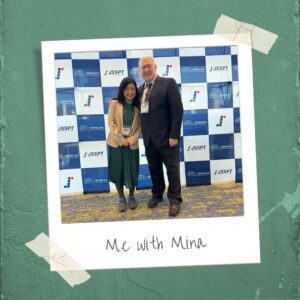
I delivered a couple of lectures (injury prevention and concussion in sports) for around 40 postgraduate sports PT MSc students, and we had time to engage in interesting discussions, which of course continued at the restaurant where we ended up afterwards. It was interesting to meet some international students (from Brasil and Ecuador) who are part of university’s exchange programs. I also distributed some BJSM copies, and was delighted to discover that our journal has a high reputation among students and teachers.
We also found time to practice what we preach and hit the slopes at some of the oldest ski resorts near Sapporo, namely Teine (home of the alpine skiing during the 1972 Winter Olympics) and Asari (close to the historical harbour city of Otaru). With Mina and Taksumi (a sports PT working for the Japanese Freestyle National Team), two excellent alpine skiers, I was lucky to experience some breathtaking powder snow downhill rides. I will remember this experience forever.

Friday 12th January 2024: Lecturing at the Tokyo College of Sports and Recreation, Tokyo
On the 12th, I flew back to Tokyo for an invited lecture at the Tokyo college of sports and recreation, home of long-time friend Dr. Mitsunori Tsumaki (Athletic Trainer, Acupuncturist). This college is part of the JIKEI Group, which currently has 83 professional training colleges located in major cities throughout Japan. In the audience were students from the four courses (Physical Therapy, Athletic Training, Acupuncture and Judo Therapy) and many friends, who I’ve met during my career. Most of these trainers are former students of this college, and were then involved in many sports organizations, mostly with the Japanese Football Association.
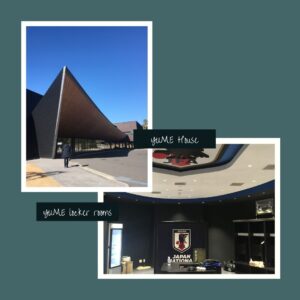
In the afternoon we had the chance to visit the “YUME Field” (Field of dreams), the official Japanese Football Association training center (located in Chiba-city, close to Tokyo), where the National Football teams have their headquarters. This unique new park integrates football facilities for Japan’s national teams with a park for the locals to enjoy. Its facilities include a clubhouse, a futsal arena, and football fields. Football has been in Japan for over a century now, although its popularity hasn’t always been at the levels of other sports. Interestingly, ANIME helped increase the popularity of football in Japan. Created by Yoichi Takahashi (a Japanese cartoonist and manga artist), Captain Tsubasa became the first football anime in 1981. It introduced the sport to a new generation of Japanese athletes. In 1992, 11 years after the premiere of Captain Tsubasa, the J-League would launch, and in 1998 Japan (“Samurai Blue”) qualified for its first World Cup. It would co-host the following tournament in 2002 with South Korea, and has not missed a single World Cup tournament since. On the women’s side, Japan (“Nadeshiko”) has become one of the powerhouses in the world of women’s football, defeating the United States in the 2011 World Cup final and finishing as runners-up in 2015.
Reflections and final comments
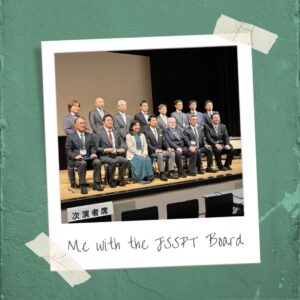 Before this trip, It had been 5 years since my last visit to this Japan: I was delighted to be back in this wonderful country with its unique mix of modern and traditional customs and habits. It was even better to spend it with friends who made me feel at home! Mitsu and Yuichi were great hosts in Tokyo, and the JSSPT board offered fantastic hospitality at their conference. Mina, many thanks again for the unique Hokkaido experience, including the powder snow feeling! I really hope that JSSPT can get more recognition in the near future, and believe that our BJSM networking could be helpful for the many interested and motivated Japanese sports PTs. On a final note, the World Physiotherapy Congress 2025 will take place, 29-31 May 2025, in Tokyo, thus keeping the international PT focus on Japan.
Before this trip, It had been 5 years since my last visit to this Japan: I was delighted to be back in this wonderful country with its unique mix of modern and traditional customs and habits. It was even better to spend it with friends who made me feel at home! Mitsu and Yuichi were great hosts in Tokyo, and the JSSPT board offered fantastic hospitality at their conference. Mina, many thanks again for the unique Hokkaido experience, including the powder snow feeling! I really hope that JSSPT can get more recognition in the near future, and believe that our BJSM networking could be helpful for the many interested and motivated Japanese sports PTs. On a final note, the World Physiotherapy Congress 2025 will take place, 29-31 May 2025, in Tokyo, thus keeping the international PT focus on Japan.
——————————————————-
Author information:
Mario Bizzini, PhD, MSc, PT
BJSM Deputy Editor
Swiss Sports Physiotherapy Association
Human Performance Lab
Schulthess Clinic
Zürich, Switzerland